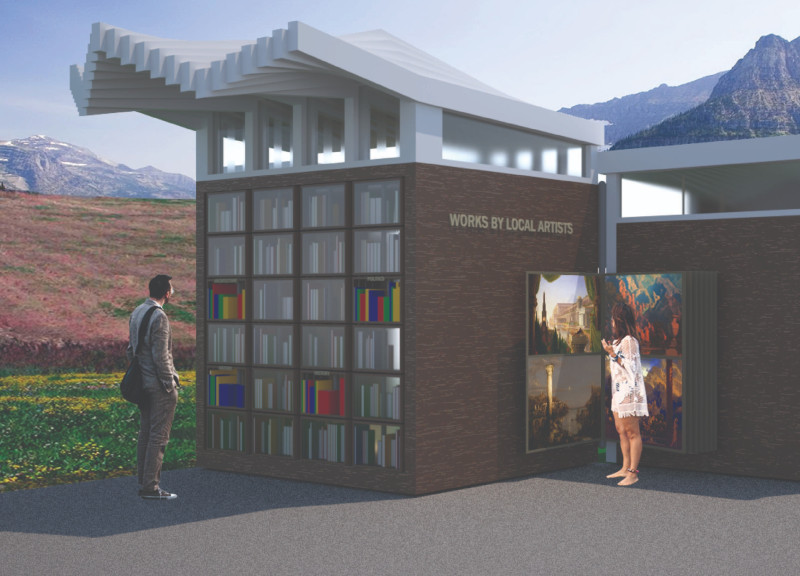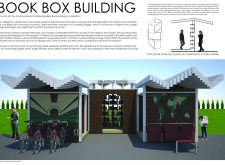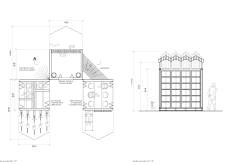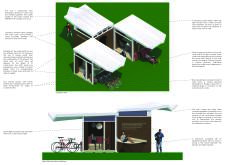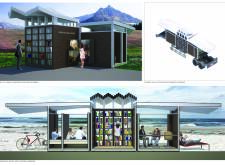5 key facts about this project
The Book Box Building offers a new approach to community reading. It functions as a portable reading room, designed to be transported to different locations to improve access to books. The structure emphasizes adaptability and practicality, providing spaces for both individual reading and group activities within a thoughtful design.
Modular Structure
The design consists of three modules that can fold into one elongated rectangular form for easy transport. The primary module focuses on book storage, equipped with a unique shelving system featuring twenty-four separate boxes organized by subject. This allows the shelves to rotate, making it easy for people to access books from both inside and outside, encouraging visitors to interact with the collection.
Reading Spaces
Two secondary modules are designed for reading and community interaction. The left module provides covered bicycle parking and private reading nooks, supporting sustainable transport while offering quiet spaces for focus. The right module includes a six-seat table for group discussions and three folding lounge chairs, creating flexible areas for social engagement.
Natural Light and Ambiance
The roof includes clearstory windows that let natural light into the interior, creating a warm and inviting atmosphere. These windows also help to separate the roof visually from the walls. For evening use, globe lights hang from the ceiling to ensure the space is well-lit at night, allowing it to be functional at all hours.
Material Considerations
Two types of ½" plywood are used for the walls and floors, chosen for their lightweight properties and sustainability. The roof is made from elongated aluminum boxes, which help with water drainage while keeping the structure light. This selection of materials reflects a focus on environmental responsibility and efficient resource use.
Unique design elements enhance the experience, including a carved plywood depiction of a national library and a hammock with an inspirational quote strung between the modules. These details encourage visitors to engage with the space, adding a layer of connection to literature and promoting moments of reflection.


